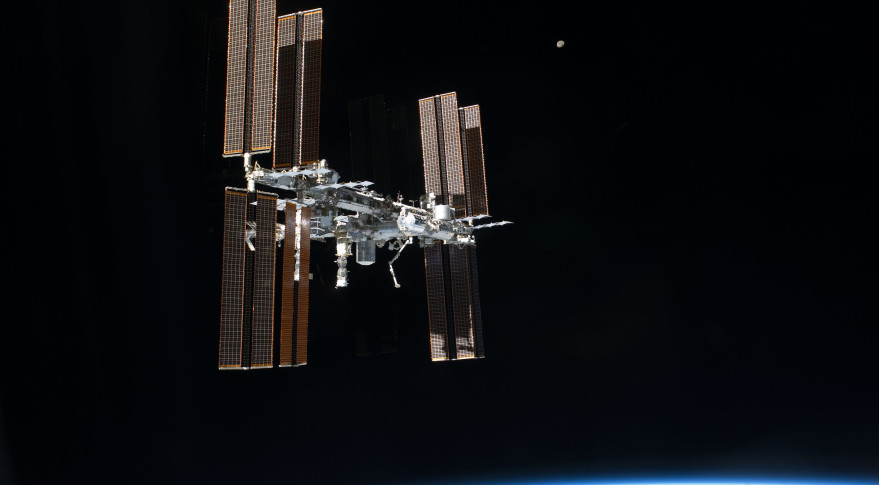Report Calls for ISS Research Transition Plan and Use of Alternative Platforms

WASHINGTON — With utilization of the International Space Station reaching a maximum, and with its long-term future uncertain, a recent report recommends that NASA develop transition plans and make use of alternative platforms, including commercial vehicles, to carry out critical microgravity research.
The midterm assessment of the 2011 decadal survey on life and physical sciences research at NASA, released by a committee of the National Academies Dec. 15, supported efforts by NASA to increase research on the ISS, but warned the agency needed to act soon to develop a transition plan for such research after 2024.
"It is essential that NASA as quickly as possible develop a International Space Station-post-2024 strategy," the report stated in one of its recommendations. "This development factors strongly in the overall exploration strategy, space life and physical sciences research priorities, and resource allocation in terms of crew time, cargo delivery, and funding." [Cosmic Quiz: Do You Know the International Space Station?]
NASA and its international partners have committed to operating the ISS only through 2024, and support for an extension of station operations beyond that point is uncertain. A NASA authorization bill enacted in March 2017 directed NASA to develop an ISS transition plan to show how the agency will shift from "from the current regime that relies heavily on NASA sponsorship to a regime where NASA could be one of many customers of a low-Earth orbit non-governmental human space flight enterprise."
The authorization bill set a Dec. 1 deadline for the report. However, as of earlier last month the agency had yet to submit the report to Congress.
The report's call for a transition plan stems from both addressing the growing utilization of the ISS as well as the expectation that research in low Earth orbit will need to continue beyond 2024. The committee noted in its report that both internal and external facilities at the ISS for hosting experiments are nearly full, but suggested that privately-developed capabilities would be a more effective means of meeting demand versus building more government-funded facilities for a station that may only operate until the mid-2020s.
"As the research capability on the ISS reaches maximum throughput in 2018, it will be important to focus on complete utilization of those facilities rather than developing additional government-funded facilities," the report stated. "Budget data presented to the committee indicate that if fewer new facilities were to be developed, significant funds would become available for the conduct of experiments in existing facilities on the ISS."
Get the Space.com Newsletter
Breaking space news, the latest updates on rocket launches, skywatching events and more!
The report also made clear, though, that as NASA looks to human missions beyond Earth in the 2020s and beyond, it will still need a research capability in low Earth orbit to address the "significant unknowns and risks" of such missions.
"LEO science research needed for exploration will be required beyond 2024," the report concluded. "Extended durations in microgravity, measured in years, will continue to be required to best meet deep space exploration research needs."
The report also recommended NASA examine a more diverse range of platforms for such research that doesn't require the space station's unique capabilities, ranging from terrestrial laboratories to free-flying satellites. Those alternative platforms also include new commercial suborbital vehicles under development and entering service.
"The Academies and the midterm assessment recognizes the value and the future of suborbital research opportunities," said Dan Dumbacher, a Purdue University professor and co-chair of the study, in a Dec. 18 presentation at the Next-Generation Suborbital Researchers Conference in Broomfield, Colorado.
Dumbacher said that recommendation and others in the report has been accepted by both NASA leadership and Congressional staffers briefed on its findings prior to its release. "Everybody recognized the value of those statements," he said.
Dumbacher, who becomes executive director of the American Institute of Aeronautics and Astronautics (AIAA) this month, said he's interested in using that new position to help support alternative research platforms like suborbital vehicles. "Because of the national recognition of what is going on in this arena, and what the future can and may hold, AIAA is here to help support," he said.
This story was provided by SpaceNews, dedicated to covering all aspects of the space industry.
Join our Space Forums to keep talking space on the latest missions, night sky and more! And if you have a news tip, correction or comment, let us know at: community@space.com.

Jeff Foust is a Senior Staff Writer at SpaceNews, a space industry news magazine and website, where he writes about space policy, commercial spaceflight and other aerospace industry topics. Jeff has a Ph.D. in planetary sciences from the Massachusetts Institute of Technology and earned a bachelor's degree in geophysics and planetary science from the California Institute of Technology. You can see Jeff's latest projects by following him on Twitter.










